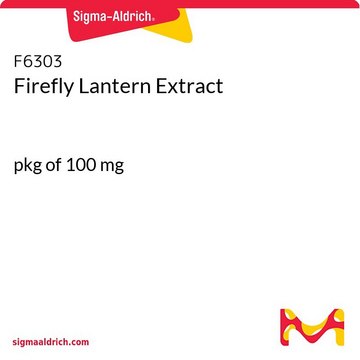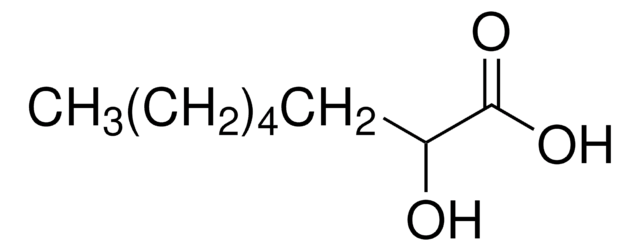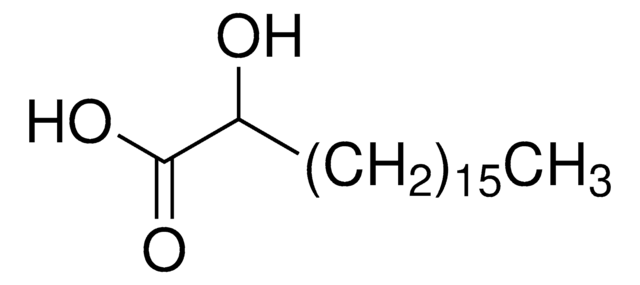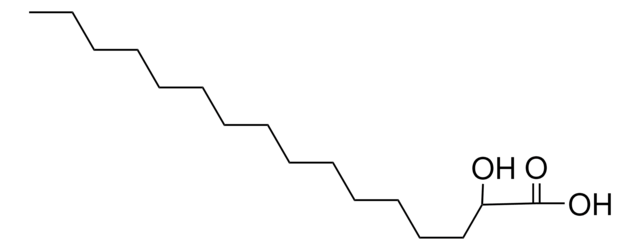H3648
(±)-3-Hydroxydecanoic acid
≥98%
Synonyme(s) :
DL-β-Hydroxycapric acid
Se connecterpour consulter vos tarifs contractuels et ceux de votre entreprise/organisme
About This Item
Formule empirique (notation de Hill):
C10H20O3
Numéro CAS:
Poids moléculaire :
188.26
Numéro MDL:
Code UNSPSC :
12352211
ID de substance PubChem :
Nomenclature NACRES :
NA.25
Produits recommandés
Niveau de qualité
Essai
≥98%
Forme
powder
Groupe fonctionnel
carboxylic acid
Type de lipide
saturated FAs
Conditions d'expédition
ambient
Température de stockage
2-8°C
Chaîne SMILES
CCCCCCCC(O)CC(O)=O
InChI
1S/C10H20O3/c1-2-3-4-5-6-7-9(11)8-10(12)13/h9,11H,2-8H2,1H3,(H,12,13)
Clé InChI
FYSSBMZUBSBFJL-UHFFFAOYSA-N
Application
- LORE receptor homomerization is required for 3-hydroxydecanoic acid-induced immune signaling and determines the natural variation of immunosensitivity within the Arabidopsis genus.: This study unveils the crucial role of 3-Hydroxydecanoic acid in mediating immune responses through LORE receptor homomerization in plants, providing insights into the molecular mechanisms of plant defense and potential agricultural applications (Eschrig et al., 2024).
Code de la classe de stockage
11 - Combustible Solids
Classe de danger pour l'eau (WGK)
WGK 3
Point d'éclair (°F)
Not applicable
Point d'éclair (°C)
Not applicable
Équipement de protection individuelle
Eyeshields, Gloves, type N95 (US)
Faites votre choix parmi les versions les plus récentes :
Déjà en possession de ce produit ?
Retrouvez la documentation relative aux produits que vous avez récemment achetés dans la Bibliothèque de documents.
Les clients ont également consulté
Ahmad Mohammad Abdel-Mawgoud et al.
Applied microbiology and biotechnology, 86(5), 1323-1336 (2010-03-26)
Rhamnolipids are glycolipidic biosurfactants produced by various bacterial species. They were initially found as exoproducts of the opportunistic pathogen Pseudomonas aeruginosa and described as a mixture of four congeners: alpha-L-rhamnopyranosyl-alpha-L-rhamnopyranosyl-beta-hydroxydecanoyl-beta-hydroxydecanoate (Rha-Rha-C(10)-C(10)), alpha-L-rhamnopyranosyl-alpha-L-rhamnopyranosyl-beta-hydroxydecanoate (Rha-Rha-C(10)), as well as their mono-rhamnolipid congeners Rha-C(10)-C(10)
Florian Bredenbruch et al.
Journal of bacteriology, 187(11), 3630-3635 (2005-05-20)
The role of intercellular communication in the regulation of bacterial multicellular behavior has received widespread attention, and a variety of signal molecules involved in bacterial communication have been discovered. In addition to the N-acyl-homoserine lactones, 4-hydroxy-2-alkylquinolines (HAQs), including the Pseudomonas
Q Qi et al.
Applied microbiology and biotechnology, 54(1), 37-43 (2000-08-22)
For the first time, the purification has been achieved of the type II polyhydroxyalkanoate (PHA) synthases PhaC1 and PhaC2 from Pseudomonas aeruginosa applying N-terminal His6-tag fusions and metal chelate affinity chromatography. In vivo His6-tagged PHA synthase activity was confirmed by
Anders Broberg et al.
Applied and environmental microbiology, 73(17), 5547-5552 (2007-07-10)
The metabolite production of lactic acid bacteria (LAB) on silage was investigated. The aim was to compare the production of antifungal metabolites in silage with the production in liquid cultures previously studied in our laboratory. The following metabolites were found
Evrim Acar et al.
Molecular nutrition & food research, 63(1), e1800215-e1800215 (2018-08-11)
Self-reported dietary intake does not represent an objective unbiased assessment. The effect of the new Nordic diet (NND) versus average Danish diet (ADD) on plasma metabolic profiles is investigated to identify biomarkers of compliance and metabolic effects. In a 26-week
Notre équipe de scientifiques dispose d'une expérience dans tous les secteurs de la recherche, notamment en sciences de la vie, science des matériaux, synthèse chimique, chromatographie, analyse et dans de nombreux autres domaines..
Contacter notre Service technique

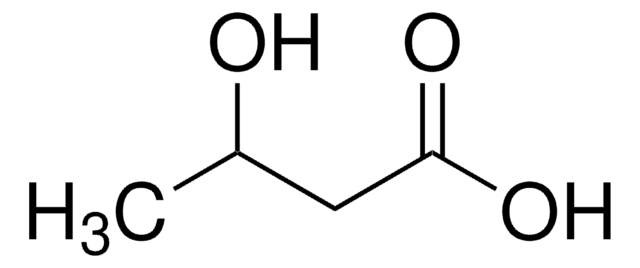
![Poly[(R)-3-hydroxybutyric acid] natural origin](/deepweb/assets/sigmaaldrich/product/structures/129/476/7d1c924b-f644-4889-a2d6-d7a923ce382c/640/7d1c924b-f644-4889-a2d6-d7a923ce382c.png)
